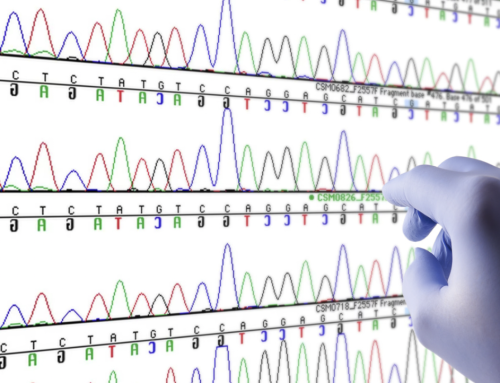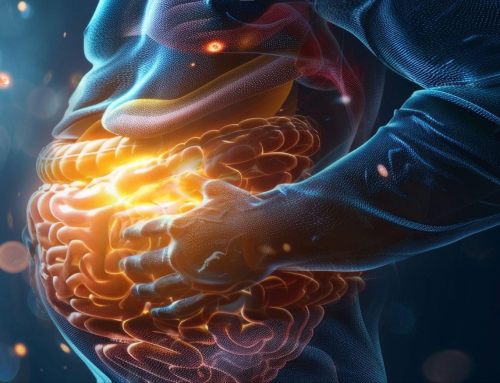Epigenetics and Trained Immunity
The ability of the human immune system to remember exposures to pathogens and antigens forms the basis for robust protection from diseases. Some cells of the immune system can be exposed to certain stimuli that have the ability to train the cells to respond in specific ways, modifying their behavior. The exciting advances in research tools have made the exploration of underlying mechanisms of immunological memory possible, exposing epigenetic involvement. What is the high-level view of trained innate immunity, and what role do epigenetics play?
A Quick Review: Human Adaptive and Innate Immune Systems
Long ago, immunological memory was discovered in invertebrates and plants, and it forms their innate immune system. This innate immune system is non-specific as it responds to characteristics common to many pathogens (microorganisms) or antigens (substances that trigger a reaction from the immune system).
Humans have a more robust and complex immune system that includes the innate system but also has the adaptive immune system, which is acquired through exposure to foreign stimuli such as pathogens and antigens. The adaptive immune system is triggered by exposure to specific foreign stimuli and responds by producing memory cells and antibodies. While it is generally slower than the innate immune system in response time, the adaptive immune system is more effective because it accurately recognizes enemies and has ways of explicitly targeting those entities for destruction. Memory cells are vital for recognizing threats.
Some cells are specific to the human innate immune system, such as mast cells and several types of white blood cells – monocytes, neutrophils, and natural killer (NK) cells. Neutrophils quickly respond, arriving as a first line of defense against injury or infection. They sound an alarm to draw other defenses to the site.
In the adaptive immune system, B memory cells are created when B cells confront and have a response to an antigen. B memory cells are long-lived and can respond quickly and more vigorously when the same antigen is confronted again. T memory cells have the job of remembering any pathogen that has been confronted in the history of the human. If a foreign substance or entity is recognized from a previous encounter, the T memory cell will cause the activation of other immune defenses. Monocytes are white cells that can not only recognize foreign entities but can also engulf them! Monocytes create cytokines that help manage immune responses, and they can also differentiate into macrophages and dendritic cells.
Trained Immunity
Trained immunity is the memory of an encounter with a foreign entity or substance and the set of reactions that allow a speedy and more robust immune system response upon the second stimulating encounter with the pathogen. The additional strength of response has been associated with epigenetic changes that can persist beyond exposure to the stimulation. The response might be to increase antimicrobial or inflammatory actions of innate immune cells, however, note that some exposures to stimuli can result in tolerance, where there is a decrease in response strength. Tolerance is a normal and natural mechanism thought to be a way for cells to identify and ignore their own antigens. Like training, tolerance is another area of intense research (1).
Trained Immunity: How Monocytes Get Trained
There are many in vitro methods to train human peripheral monocytes when researching potential epigenetic factors, but the method generally follows these steps (2):
- The training period consists of exposure of the monocytes to a stimulus for a period of time, often 24 hours.
- After exposure to the stimulus, the cells rest in a culture medium without stimulation for 5-7 days, allowing a return to a steady state.
- Now existing as differentiated macrophages, the cells are exposed to the same or a different stimulus to determine if the original stimulus survived differentiation and resulted in epigenetic reprogramming.
Epigenetic Mechanisms of Action in Trained Immunity of Monocytes
When exploring how immune training of monocytes achieves functional reprogramming, chromatin is the focus of attention. Chromatin is the mix of proteins and DNA composing chromosomes in human cells. A high number of those proteins are histones, which contain vast amounts of DNA in a densely compacted form so that it may fit into a cell’s nucleus. DNA is intertwined with histones, forming small clumps called nucleosomes. Nucleosomes form chromatin by curling around DNA strands, adding various proteins and linker histones to form an organized structure.
When transcription and DNA replication need to occur, the individual fibers of the chromatin can unwind to allow contact with other substances. It is in this microenvironment that many of the underlying mechanisms of action in trained innate immunity occur.
In the training of monocytes, several mechanisms of action achieve functional reprogramming in an epigenetic way- the underlying DNA is unchanged, but its expression is altered.
Histone modifications – The power behind histone modifications is their ability to target functional genomic regions and affect transcription. Through these processes, high-affinity binding sites are created to enlist chromatin readers to put in place, remove, move, or change the structure of nucleosomes. Conveniently, histone modifications are reversible (1).
- Histone lysine acetylation – Acetylated histones induce a loosening of the chromatin structure by neutralizing an electrostatic charge on the tail of the histone that changes the dynamics of nearby nucleosome components. “Bromodomains” in chromatin reader proteins identify and bind acetylated histones. Histone acetyltransferase (HAT) complexes contain bromodomains that hold them to acetylated chromatin, passing the acetyl characteristic to nearby nucleosomes. A different type of reader, the bromodomain and extra-terminal, can recruit transcription factors (TFs) and complexes that remodel chromatin. This process is associated with both innate immunity and inflammation. When acetyl groups need removal, histone deacetylase (HDAC) enzymes can remove them from histone tails. The balance of HAT and HDAC activity is crucial to gene regulation (1).
- Histone lysine methylation – With histone methylation, the location on the histone tail affects the read. Repression of genes is indicated by H3 histones that have methylation at two positions, lysine-27 and lysine-9. Transcription is permitted at lysine-4 and lysine-36 positions. As with histone acetylation, some enzymes facilitate the addition (lysine methyltransferase, KMT) and the removal of the methylation (lysine demethylase, KDM). Different types of histone lysine residues play different functional roles in the regulation of genes (1).
DNA methylation of chromatin – The binding of a methyl group to DNA is another way to manipulate the expression of genes in monocytes, with the location again affecting the resulting function. The methyl group 5-methylcytosine (5mc) can achieve the silencing of genes by causing “transcriptionally incompetent chromatin” in the CpG (cytosine-phosphate-guanine) region of the DNA template, which is near a promotor region (1). However, 5mc can also regulate transcription factor binding to gene regulatory sites, affect transcriptional elongation (reading of the DNA template by RNA polymerase), and can reach regulatory actions being performed relatively far away. It is now quite common to use methyl capture and whole-genome bisulfite sequencing (WGBS) to clarify the makeup of the methylome, including in cases of cytokine production and monocyte differentiation to macrophages.
Epigenetic cross-talk – Various protein complexes can recruit certain classes of epigenetic enzymes to mutually influence chromatin. Heterochromatin protein 1 (HP1) is one such protein complex that can increase the repression of genes by engaging DNA and lysine methyltransferases (1). This process is reversible, as HP1 can be decoupled from the DNA strand by lysine demethylases.
Putting it All Together
Histone modifications, DNA methylation, and epigenetic cross-talk are important for cellular identity at the end of the monocyte-to-macrophage differentiation. These mechanisms of action are reversible, do not change the underlying DNA, and can regulate transcription through opening up the chromatin architecture.
However, remember that the makeup of the original stimulus matters. How does this dynamic play out? What are some cases that demonstrate trained immunity (1)?
- In general, initial stimulation by β-glucan, oxLDL, and BCG (Bacillus Calmette–Guérin vaccine for tuberculosis) in immune training of monocytes led to enhanced cytokine production from a secondary stimulation from toll-like receptors in the differentiated macrophage. Increased cytokines production in humans can result in allergic responses, autoimmune diseases, inflammation, and possibly even cancer.
- When β-glucan is the initial stimulus in the immune training of monocytes, one study showed that 121 genes sustained transcriptional activity after removing stimulation, resulting in “persistent transcriptional memory” in the differentiated macrophages at days 1 and 6. Other studies have shown that levels of H3K4m3 histone modification are increased at promoters, where genes encode for the creation of intracellular signaling molecules and inflammatory cytokines.
- In cells where the initial stimulus was oxidated low-density lipoproteins (oxLDL), increased H3K4m3 was found at promoters for genes associated with atherosclerosis. Additionally, oxLDL-trained immunity increased glycolysis, which is the first step in cellular respiration, where glucose is broken down into pyruvate.
- When lipopolysaccharide (LPS) is the initial stimulus in the immune training of monocytes, it acts as an agonist to toll-like receptor 4, resulting in tolerance (a decrease in response strength).
- Interestingly, partial reversal of LPS tolerance can be achieved by β-glucan.
When a second exposure to a stimulus (whether the same or a different stimulus) involves a mediator such as cytokines, which is heavily involved in inflammation, it can be assumed that the impact is damaging to health. However, it also provides a target for intervention and remediation of illnesses and conditions where chronic inflammation is a driver.
Possible Applications of Trained Immunity
Trained immunity could be used in various ways since it is a target-rich process that includes initial and secondary stimulation, enzymes that manipulate transcription, and various chemical mediators such as cytokines, histamines, interleukins, and tumor necrosis factor. Future applications could tweak overall immune function to resist diseases and infections if perfected. There is already research focusing on macrophage training to affect viral infections (3).
Since increased cytokine production correlates with an increased risk for cancer, all initial stimuli that resulted in increased cytokines (such as β-glucan) and the cytokines themselves could be a target for suppression, reversal, or blockage. All conditions that involve inflammation would likely benefit, such as cancer, autoimmune diseases, and some metabolic conditions, including diabetes and hyperlipidemia.
Lastly, immune training may inform the next evolution of vaccines, making use of epigenetic processes that can be easily manipulated to customize the immune response. Watch this space; this research topic is fertile ground for amazing breakthroughs.
Sources:
- van der Heijden CDCC, Noz MP, Joosten LAB, Netea MG, Riksen NP, Keating ST. Epigenetics and Trained Immunity. Antioxid Redox Signal. 2018 Oct 10;29(11):1023-1040. doi: 10.1089/ars.2017.7310. Epub 2017 Nov 21. PMID: 28978221; PMCID: PMC6121175.
- Divangahi M, Aaby P, Khader SA, Barreiro LB, Bekkering S, Chavakis T, et al. Trained immunity, tolerance, priming and differentiation: Distinct immunological processes [Internet]. Nature News. Nature Publishing Group; 2020 [cited 2023Jan28]. Available from: https://www.nature.com/articles/s41590-020-00845-6
- John SP, Singh A, Sun J, Pierre MJ, Alsalih L, Lipsey C, Traore Z, Balcom-Luker S, Bradfield CJ, Song J, Markowitz TE, Smelkinson M, Ferrer M, Fraser IDC. Small-molecule screening identifies Syk kinase inhibition and rutaecarpine as modulators of macrophage training and SARS-CoV-2 infection. Cell Rep. 2022 Oct 4;41(1):111441. doi: 10.1016/j.celrep.2022.111441. Epub 2022 Sep 15. PMID: 36179680; PMCID: PMC9474420.












